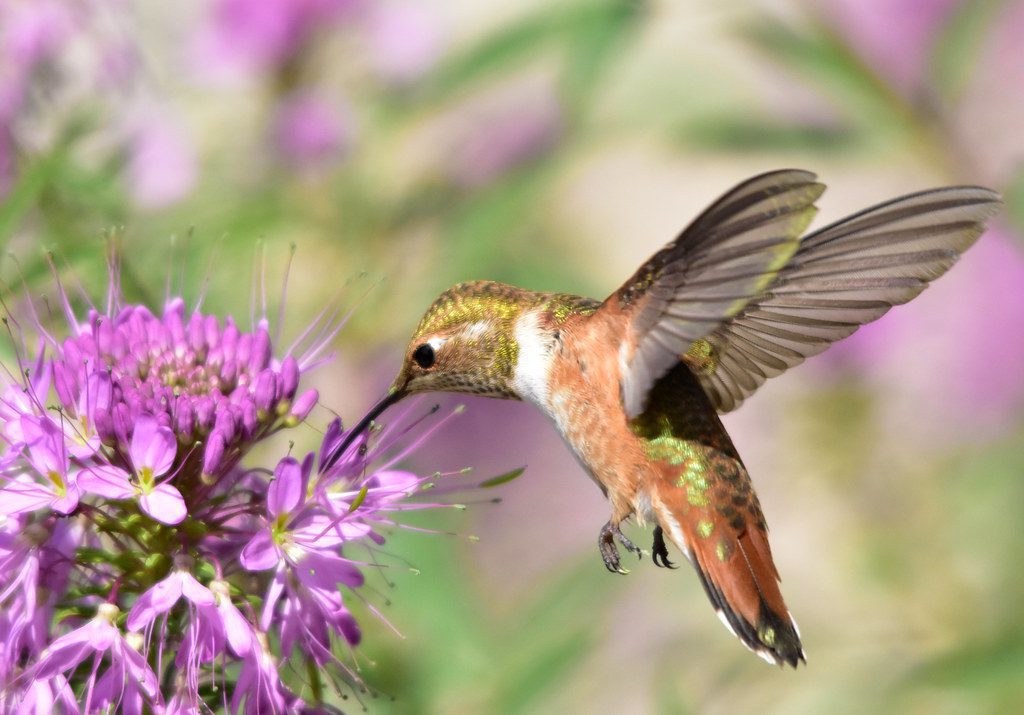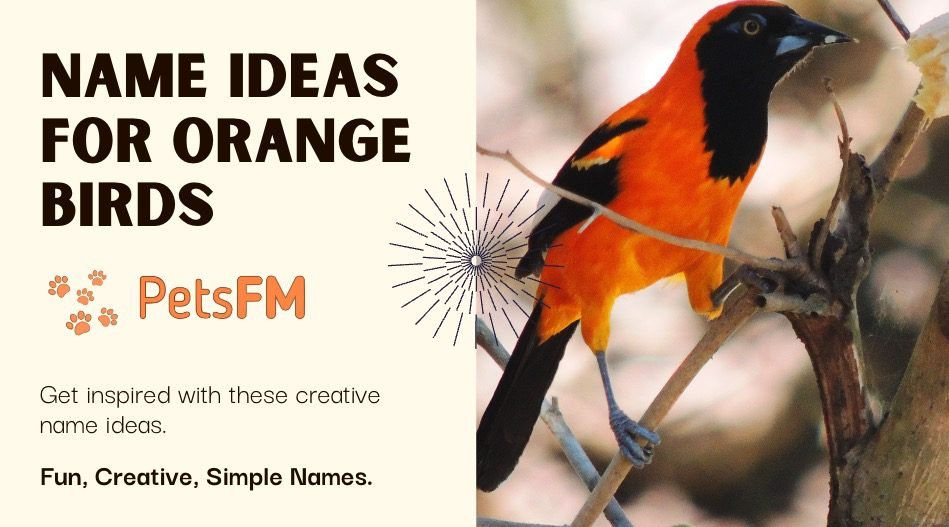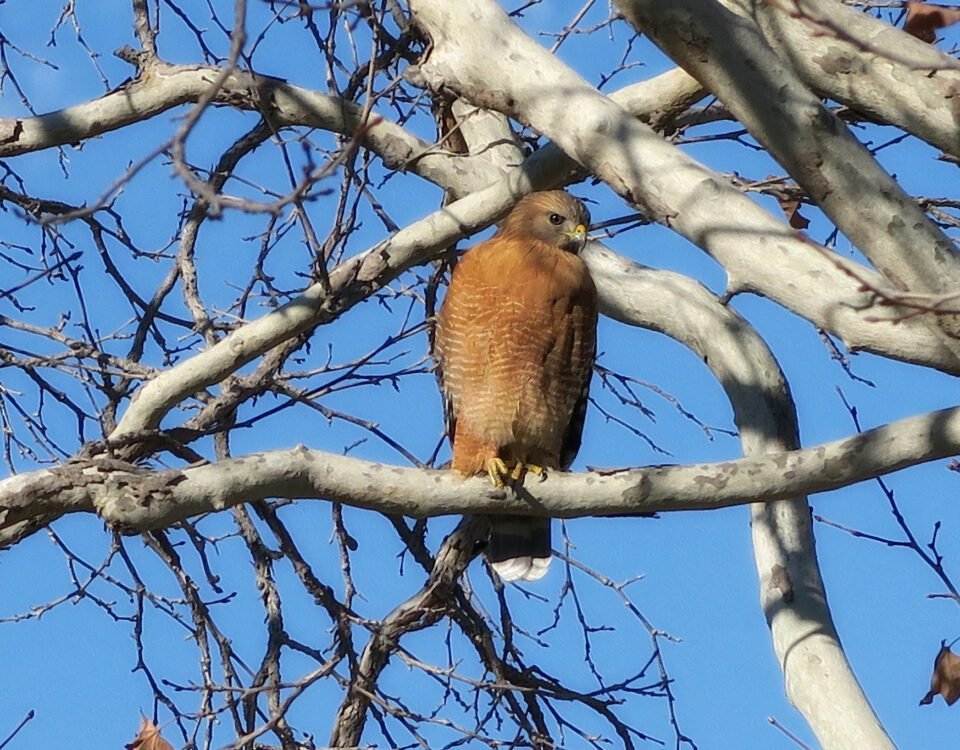


Do Birds Like Music? Different Bird Species Analyzed
October 9, 2023


Can Birds Get Fat? (How To Fix And Prevent Obesity)
October 10, 2023Have you ever been amazed by the extended beaks of hummingbirds and wondered, “Why do hummingbirds have such long beaks?” Their pencil-thin, long beaks are essential to their daily survival and a fascinating result of millions of years of evolution.
Keep reading to unravel the secrets behind the unique beaks that characterize these tiny, stunning creatures.
Related Read: Why Hummingbirds Are More Active In The Rain? EXPLAINED!
Evolution of Hummingbird Beaks
These little creatures, often described as the jewels of the avian world, possess elongated beaks that are as enchanting as they are functional.
To merely regard them as tools for sipping nectar, like a straw, would indeed do an injustice to the hummingbird’s evolution and adaptation.
Initially, the hummingbird’s distinctive beak journey begins with a natural selection and adaptation process. Their ancestors sported shorter and more common type beaks you would find on any sort of bird. However, over millions of years, hummingbirds have gradually evolved to have longer beaks.
Must Read: Why Do Birds Have Claws? The Real Reason Why!
Purpose Long Beaks Serve
As the saying goes, every tool has its place and purpose, and the same is true for hummingbirds with their remarkably long beaks. Let’s discuss some of the primary functions this unique characteristic serves.
1. Feeding Assistance
Hummingbird beaks are specialized for feeding on nectar from flowers, a nectar source that is typically competition-free, an essential factor in their survival.
Mother Nature, in all her wisdom, has crafted these beaks to be perfect for accessing deep, narrow flowers that other birds and insects cannot reach.


Hummingbird Sucking Nectar
One example is the trumpet-shaped flowers, such as the trumpet creeper and the cardinal flower. These flowers have long, tubular corollas that contain nectar deep within. The hummingbird’s long, slender beak allows it to reach the nectar hidden deep inside the flower.
Interesting Read: What Are The Laws Behind Keeping Hummingbirds As Pets?
2. Foraging Food
Hummingbirds use their beaks to search cracks in the tree bark to dislodge insects, their secondary food source. The long and slender beaks aid in locating insects residing within trees.
The beak’s length helps in getting to those hard-to-reach places, making their feeding more efficient and less energy intense.
3. Potent Weapon
The long beak of a hummingbird is a formidable and potent weapon when it comes to territorial disputes or defending against predators.
Males, in particular, can be quite assertive, using their beaks in aerial dogfights to protect their feeding areas.
4. Long Tongues
A hummingbird’s tongue is almost as long as its beak. Hummingbirds have a unique tongue structure that allows them to lap up nectar from flowers.
By having such long tongues, hummingbirds can reach the nectar that’s hidden deep inside flowers far more effectively than if they had shorter tongues. It’s like having an extended straw right in their mouth.
5. Air Stabilization
Their extended beaks happen to contribute significantly to their mid-air stability. When flitting around flowers to feed, hummingbirds need to maintain incredible precision to target and sip nectar from within petals.
The interesting thing about this function is that it’s not just their beak alone that does the trick. With their long, narrow wings optimal for rapid movement and their beak serving as a counterbalance, hummingbird bodies are nothing short of a marvel of avian evolution.
Also, Read: Do Hummingbirds Whistle? Here’s Everything You Need To Know!
6. Pollination
As hummingbirds feed on nectar, they inadvertently transfer pollen from one flower to another. The shape and length of their beaks allow them to reach deep into flowers, coming into contact with the plant’s reproductive organs.


When they visit another flower, some of the pollen from the previous flower sticks to their beaks and gets deposited onto the stigma of the new flower, facilitating cross-pollination. This symbiotic relationship between hummingbirds and flowers has played a crucial role in the evolution of both parties.
Also, Read: Why Do Birds Hit Windows? Is It Considered Spiritual?
7. Territorial Defense
Studies have observed that hummingbirds with longer beaks are typically more aggressive and successful in securing and defending their territories.
Longer beaks provide hummingbirds with a strategic advantage in territorial disputes. Their beaks act not just as handy tools for foraging but also serve as potent weapons in the face of conflict.
Their elongated beaks allow them to deliver sharp pecks to their adversaries, warding off intruders from their nectar-rich territories.
8. Courtship Display
During courtship displays, male hummingbirds may perform elaborate aerial manoeuvres, showcasing their long beaks as a display of strength and attractiveness to potential mates.


Hummingbird Beaks
Anatomy of Hummingbird’s Beak
If you’ve ever looked closely at a hummingbird, you may have noticed the unusual anatomy of its beak. The extended, needle-like structure is a central and unique feature of these tiny avians.
But have you ever wondered why it’s designed that way and what elements it includes? Let’s delve into detail to understand that.
Recommended Reading: 15+ Birds With Small Beaks (Facts & Photos Included)
1. Beak Shape
Firstly, the long, slender shape of the beak is actually an elongated version of the upper and lower jaw bones, similar to other bird species. These beaks are light yet robust. Their design is optimally engineered for precision and durability.


Hummingbird Beak Shape
The shape and size of the hummingbird’s beak aren’t static but dynamically change as the bird ages. The shape and size of a hummingbird’s beak is closely related to the type of flowers it feeds on.
Must Read: Why Are Birds So Loud in Morning and Evening? A Guide
2. Flexible Nature
Despite their delicate appearance, hummingbird beaks are tremendously flexible due to a slight groove running along the sides. It also enables the beak to open widely when the bird is catching small insects.
The beak’s flexibility comes with surprising strength. It enables hummingbirds to puncture flower structures that might be chemically or physically deterrent to other pollinators, giving them access to nectar sources others cannot reach.
3. Sharp Tip
Ironically, a part of the beak that is often overlooked is its sharp tip. This pointed structure is crucial for defence, territorial combats, and even pecking rivals during heated aerial chases.


Hummingbird Beak Tip
When two male hummingbirds are competing for the same territory or a female’s attention, they engage in aggressive behaviour. The sharp tips of their beaks can be used to jab or poke their opponent, inflicting minor injuries.
Editor’s Pick: Do Birds Like Birdhouses? How to Attract Birds to Your Birdhouse
Diversity of Beak Shapes Among Hummingbird Species
As you venture into the world of hummingbirds, it comes as a delightful surprise to discover the range of diversity that exists within their species, especially concerning their beaks.
| Hummingbird Species | Beak Shape | Adapted Function |
|---|---|---|
| Sword-billed hummingbird | Straight, extremely elongated | Pollinating deep flowers |
| Rainbow-bearded Thornbill | Straight and sharp | Picking up insects in flight |
| Sicklesbill | Curved downward | Accessing complex flowers |
| Violet Sabrewing | Wider, shorter | Consuming wider flowers and insects |
Conclusion
In closing, it’s clear how intricate and distinctive the hummingbird’s beak truly is. From its evolution over time to its diverse forms in different species, this specialized structure serves multiple functions beyond what we typically expect a bird’s beak to do. So the next time you spot a hummingbird buzzing about, remember, there’s more to that long beak than meets the eye!



